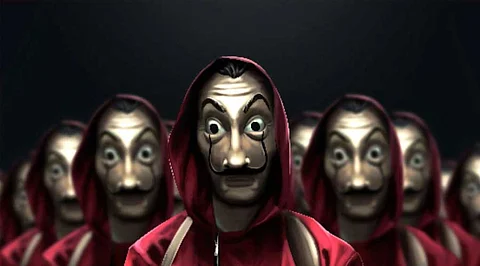

Anyone with a computer may now create one of those striking, occasionally odd images that are appearing on the internet more and more frequently these days thanks to OpenAI as it released its DALL.E-2 AI art generator in late September. It appears that AI art has arrived and has potential.
The AI art models Stable Diffusion and Midjourney, which compete with DALL.E-2 creators, also became live this year. Nevertheless, DALL-E 2 has a distinguished history: Its cousin, the text-generating machine GPT-3, which has garnered a great deal of interest and numerous gimmicky tales, was also created by OpenAI. DALL-E 2 was used to create the Cosmopolitan magazine cover in June, and Microsoft recently announced that DALL-E 2-powered artificial intelligence-generated art tools would be included in its Office software suite. The most techno-optimistic proponents of AI-generated art claim that it democratizes art for the masses; it copies human artists and threatens.
As we look at some of DALL.E's work to get ideas, it didn't appear like AI-generated art had a distinct aesthetic other than maybe being a little strange. There were raccoons playing tennis, pigs riding motorcycles while donning flowered shirts and sunglasses, and a slightly altered version of Johannes Vermeer's Girl with a Pearl Earring in which a sea otter stands in for the painting's title character. But when scrolled further, we discover that each item shared a common trait: AI art frequently resembles Western art.
Amelia Winger-Bearskin, professor of AI and the Arts at the University of Florida's Digital Worlds Institute, asserted that "all AI is only backward-looking." They are only able to forecast the future by first looking at the past.
The training set for an AI model, commonly referred to as an algorithm, is the historical data. That data set is art for an AI art model. Additionally, white, Western artists predominate in the fine art industry. This results in AI-generated images that have a distinctly Western aesthetic. To be honest, this is a little disheartening because, in theory, AI-generated art may be a very helpful tool for conceptualizing a fairer vision of art that looks very different from what we have grown accustomed to. Instead, it merely serves to maintain the colonial notions that shape how we currently perceive art.
To be explicit, models like DALL.E-2 can be instructed to produce artwork in any artist's style; for example, asking for a picture with the modifier "Ukiyo-e" will result in artwork that resembles Japanese woodblock prints and paintings. These modifiers, however, must be used by the user because they are rarely if ever, the default.
Winger-Bearskin has direct knowledge of the limitations of AI art. She discovered that the twilight backgrounds produced by the AI model oddly resembled the scenes painted by Disney animators in the 1950s and 1960s—which themselves had been inspired by the French Rococo movement. This realization came when one of her students used images generated by Stable Diffusion to make a video of a nature scene. According to Winger-Bearskin, "There are many Disney pictures, and what he got back was something we see a lot of." "Those datasets are lacking a tonne of information. We would never witness any of the countless night sights from around the world.
AI bias is a famously challenging issue. In AI art, as Sigal Samuel reported for Future Perfect in April, earlier iterations of DALL-E would produce images of white men when asked to represent lawyers, for example, and would produce images of women when asked to represent all flight attendants. Left unchecked, algorithms can perpetuate racial and sexist biases. While experts continue to dispute whether these efforts have been successful, OpenAI has been striving to reduce these impacts by improving its model to eliminate prejudices.
However, even if they succeed, the issue of aesthetic style will still exist because DALL-E will still portray a world free of racial and gender stereotypes in the context of the West.
Because of the enormous amount of Western art on the internet, adding more non-Western art to an existing dataset wouldn't be a very beneficial option. According to Winger-Bearskin, "it's kind of like providing clean water to a tree that was nourished with toxic water for the last 25 years." "The fruit from that tree is still tainted even if it is receiving better water presently. New training data run through the same model does not materially alter it.
Join our WhatsApp Channel to get the latest news, exclusives and videos on WhatsApp
_____________
Disclaimer: Analytics Insight does not provide financial advice or guidance. Also note that the cryptocurrencies mentioned/listed on the website could potentially be scams, i.e. designed to induce you to invest financial resources that may be lost forever and not be recoverable once investments are made. You are responsible for conducting your own research (DYOR) before making any investments. Read more here.
